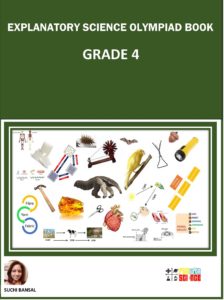FLOWER AND ITS PARTS
Home » FLOWER AND ITS PARTS

Subscribe to our Newsletter
FLOWER AND ITS PARTS
The flower is the reproductive part of a plant. Let’s first study the parts of a flower.
SEPALS:
Together all sepals of a flower are called the calyx of the flower.
· They are found in flowering plants.
· Sepals are modified leaves that form the outermost part of a flower.
· They are typically green but can be other colors.
· Flowers have different numbers of sepals depending on the species.
· The main function of the sepal is to protect the flower bud as they close up around it until it’s ready to bloom.
· The sepals can also grow larger and closing around the fruit in order to protect it from different kinds of insects or bees.
PETALS:
Together all sepals of a flower are called the Corolla of the flower.
· Petals are modified leaves that surround the reproductive parts of flowers.
· They are often brightly colored or unusually shaped to attract pollinators.
STAMEN: Male reproductive part.
· The primary function of the stamen is to produce the pollen grains.
· Stamen consists of anther and filament.
· The anther is a sac-like structure that produces and stores pollen.
· The filament supports the anther.
PISTIL/CARPEL: female reproductive part
-
· Pistils are located in the center of the flower.
· They are surrounded by petals, sepals and stamens.
· Pistil typically comes out beyond the stamens, so that insects can easily brush up the pollen grains against the pistil.
· This helps transfer pollen and fertilize the seeds in the ovaries.
· Flower pistils consist of three parts: the ovary, the style and the stigma.
STIGMA:
The stigma is located at the very top of the pistil, and is often found on the tip of the style.
The stigma is sticky in order to receive pollen grains.
STYLE:
The style is a long, thin tube that connects the stigma to the ovary so it can receive the pollen grains collected by the stigma.
OVARY:
Ovaries are large, bulbous structures located at the base of the pistil. An ovary holds the undeveloped seeds, called ovules, which are awaiting pollination.
BOOKS
We have our e-books published on Amazon for Grade 3 and Grade 4. The books serve as an important guide for Science Olympiads organized by SOF, Silverzone, Unified Council and others. Books are designed to help students understand key science concepts.
The key highlights of the book are:
· Well explained topics
· Use of diagrams and images for
students to visualize
· Test exercise after each chapter for self-assessment and evaluation
· Interesting facts sections spread across the book
Here are the links:





